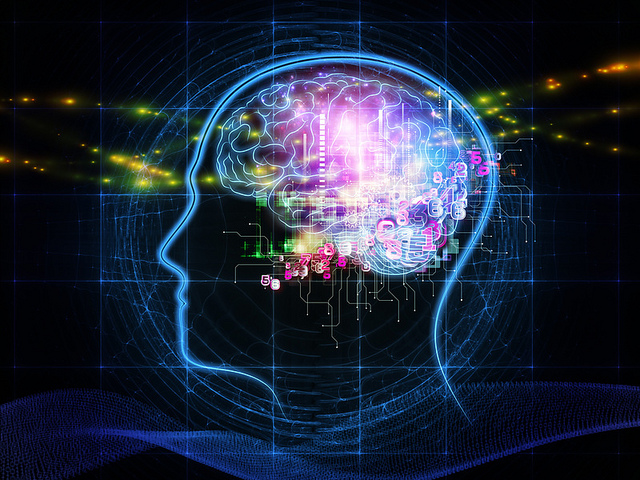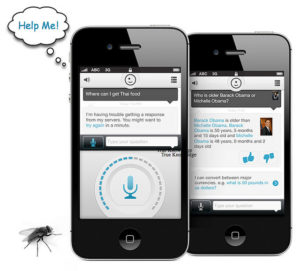Unchaining the Mind through AI: What Artificial Intelligence Actually Means for Humanity
 Unchaining the Mind Through AI
Unchaining the Mind Through AI
This article is the first of a multi-part series by Kara Anderson exploring contemporary artificial intelligence and its implications for humanity.
For Part II: “Mom was Right: Creativity Matters”
For Part III: “A Non-Political Solution to Global Healthcare”
Artificial Intelligence (AI) is a controversial yet intriguing topic associated with a variety of prospects. For some, AI is symbolic of a more advanced and sustainable future that will allow humanity to solve some of its most plaguing problems, such as disease or environmental degradation. For others, however, AI is a menacing term associated with terminator-like machines with the ability to overpower their human creators. These two reactions are representative of the two extremes regarding AI. However, the magnitude of change its development may bring to people, state decision-making and the world’s processes like climate change is colossal.
AI is becoming an unavoidable part of contemporary global development that will eventually impact every individual in some shape or form considering AI is a natural extension of human intelligence. While this series takes a decisive stance in favour of AI, the goal is not to present an argument for or against AI. Instead, this series aims to investigate the overall platform of AI by taking a more comprehensive look at its realities in both contemporary and future circumstances. Along with exploring the many outcomes of using AI technology, the legitimate concerns associated with AI, such as mechanical autonomy, employment prospects and personal security will also be addressed.
Defining AI
Given the name, AI appears to be a self-explanatory concept. It is defined as a synthetically created means of intelligence that is traditionally associated with machines; but this definition is too simplistic and fails to address the multiple facets of AI. During the field’s emergence in 1950s and 1960s, AI was defined as the “sciences of the artificial”, or the idea of designing computer-based artifices that perform human tasks. This definition eliminates the intelligence or cognitive aspect that has come to define AI and instead focuses on the idea of pre-programing a machine to perform a human task. This appears to defeat the “intelligent” aspect of AI, which is defined by a machine’s ability to learn or “independently” alter a future outcome, as there seems to be a lack of novel developments by the machine. Thus, its actions and reactions are dependent on its initial programming, which has accounted for each possible situation that may occur. But the machine is still required to process the information and decide the best course of action based on its baseline knowledge and the given situation, which resembles human reasoning processes.
The second definition centers around the idea of cognition, defined as the “science of knowledge representation and reasoning”. Like the former definition, the machine is programmed to mimic human behaviours, but instead of adhering to a strict, predetermined program, the machines uses this preliminary information to make its own decisions and create previously unknown outcomes, similar to that of a human. The initial information serves as a base but not a strict roadmap, allowing the machine some autonomy. This idea better resembles human rational, more accurately accounting for individualised ways of reasoning (or the previously rejected subjective element of intelligence). Instead of generally imitating the broad, complex, and intangible idea of human nature, the machine is more akin to an individual, using a customised and fluid thought process based on prior knowledge and past experiences. This definition also incorporates the economic principle of utility, which allows for two rational creations facing the same decision to make two distinct decisions and both achieve success based on their individual merits and cost/ benefit analyses.
Neither definition is superior to the other, but in order to properly understand AI, both definitions must be considered. At its core, AI seeks to mimic human intelligence, most notably the ability to learn. Take an automated thermostat. Initially, the owner must program it, most likely making it warm during the winter and cool during the summer. The initial programming serves as the machine’s informatic base, but following the initial programming, the machine begins to change temperatures on its own based on the time of year and the external temperature. The machine has learned or taken its past and used this information to change what happens in the future. This is a very simple example of AI, and it seems rather harmless because it is still easy to override this “intuitive knowledge”. If an individual is too cold during the summer, the individual can simply override the automated settings and adjust the thermostat. Just like humans, machines are capable of alterations and errors, but most individuals would consider not having to manually adjust the temperature to be convenient. While this is a very generalised breakdown of AI, this idea of machine learning is the core of AI that governs its development.
The truth about AI learning
Initially, the idea of machine learning is exhilarating, as it not only holds a seemingly endless number of possibilities, but the very idea of humans recreating their internal mental processes, arguably the most complex aspect of the human body, in an external machine is a hallmark achievement for humanity. Upon further consideration, however, machine learning is also worrisome, as the idea of machines being able to make decisions that alter future outcomes is unsettling. The acquisition of AI into various corporate sectors is already making some jobs redundant. Moreover, personal development, and its associated quality of creativity, is an intrinsic and fundamental quality unique to humans, but if machines possess this quality, instating restrictions and limitations upon AI would become very important.
The key to answering this difficult question lies in the idea of autonomy and the overall purpose of these artificially intelligent machines. Many individuals immediately associate learning with autonomy, which is where most of the fear behind AI emerges. Learning, however, is not synonymous with autonomy. In fact, there are many aspects in between the two concepts, such as problem diagnosis, problem solving, and decision making, all of which requires an individual or a machine to go beyond learning. For instance, a baby may become mobile after learning how to crawl and thus eliminate dependence on the parents for movement, but is not capable of self-survival. The child has simply acquired a new knowledge set that opens a wider range of possibilities for him, which is synonymous to what AI does for machines. Critics take this analogy further and claim that much like children, experiential knowledge will enable machines to gain more skill and knowledge sets that will eventually becoming fully autonomous.
Autonomy, however, is dependent on a variety of factors, such as evaluative systems, representation building procedures, the ability to develop knowledge sets that surpasses their initial scopes, and even social and emotional considerations to understand and complete basic human interactions, that AI systems would have to adopt. Even if machines could adopt these features, humans, and thus machines, are arguably never truly autonomous in the fullest definition of the word, as humans are restricted by external (social, political, economic) and internal (mental capabilities, creativity) factors. Just like machines, humans are not immortal in that they can always be overridden or shut down. This analogy of AI technology being like a human child, however, misinterprets the purpose of AI. These devices are tools designed to assist humans in a variety of areas that range from complex problem solving to performing dangerous, impossible, or even mundane tasks, all of which bring some value to world processes. While specialists predict that AI will only get closer to replicating the human mind, many aspects of the human mind are simply too abstract or intangible, which will be discussed further later on in the series.
AI in Daily Lives
AI is a powerful tool that has an infinite amount of potential. From using evolutionary robotics to transform the size of genomes to programming machines to analyse medical results and provide individuals with immediate information regarding their health – the possibilities of AI are endless. Beyond these practical and essential uses, however, AI is also defined by its convenience and its ability to simplify the daily lives of individuals. In fact, many individuals are already using AI daily in their lives with devices such as Apple’s Siri, Amazon’s Alexa, and even Netflix’s show recommendations. Netflix uses an AI system that learns a user’s likes and dislikes to recommend shows tailored to that individual. These devices are not necessarily essential to human survival, but many individuals would argue that they make life a lot easier, which is a positive benefit of AI that many fail to consider.

The Future of AI
Learning is a fundamental aspect of AI that differentiates it from technology as the world understands it. The next step for AI and its quest to capture human intelligence is the replication of human processes that define intelligence, such as consciousness, emotion, abstract reasoning (evaluative capabilities), and memory. These processes fall under the larger realm of creativity and how this creativity influences and defines human capabilities, most notably that of decision making and problem solving. While there are many concerns regarding AI being able to replicate fundamental human processes, and its increasing yet unregulated role in society, creativity and its implications of autonomous mechanical development are at the core of these concerns, which is understandable.
These concerns must be addressed simultaneously to the development of AI as opposed to succeeding the advancement of AI. Thus, in the following articles, the ideas of creativity, decision making, and security in AI systems will be discussed in order to provide a more holistic and accurate representation of AI and its future role in the world.
